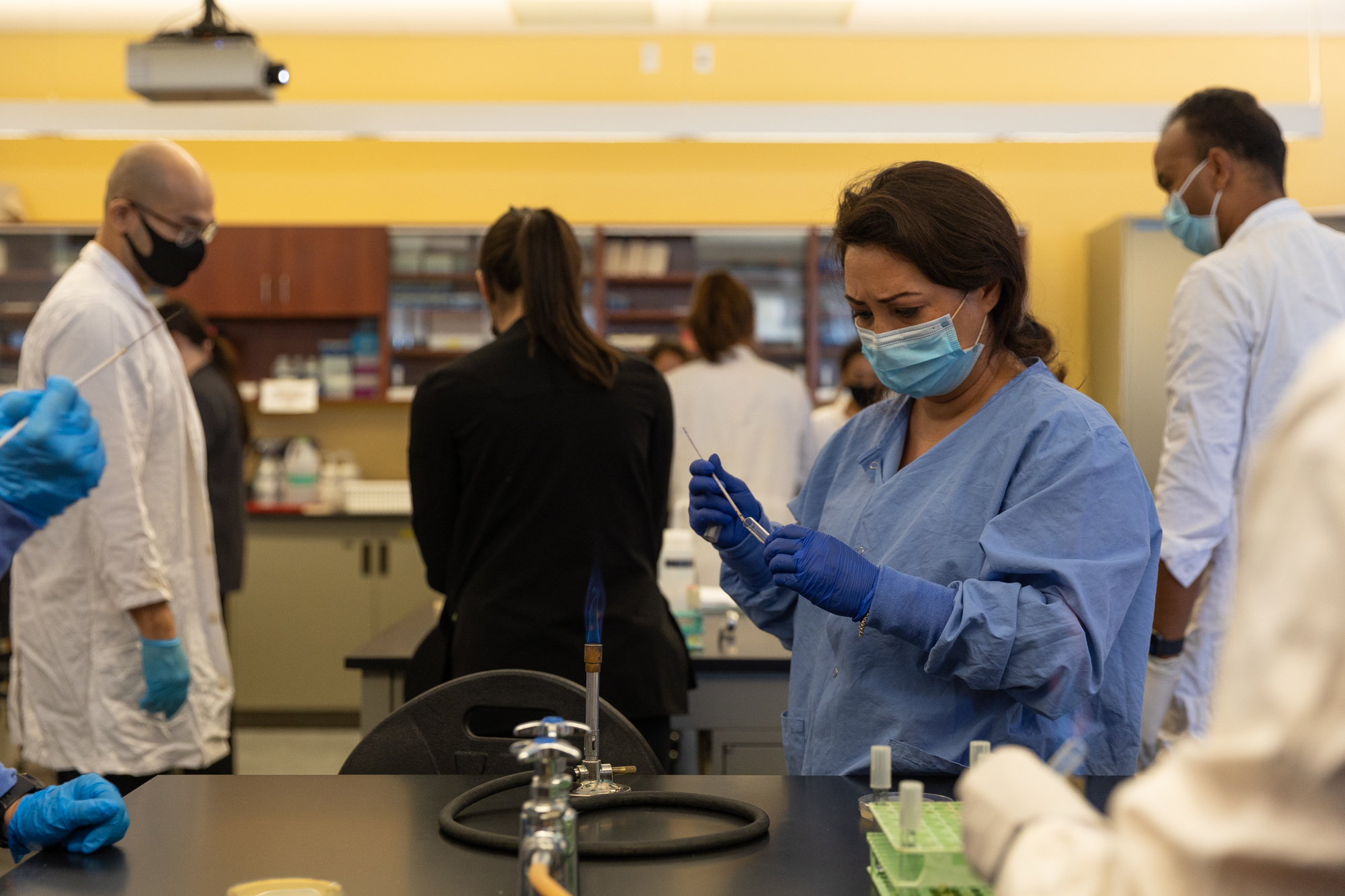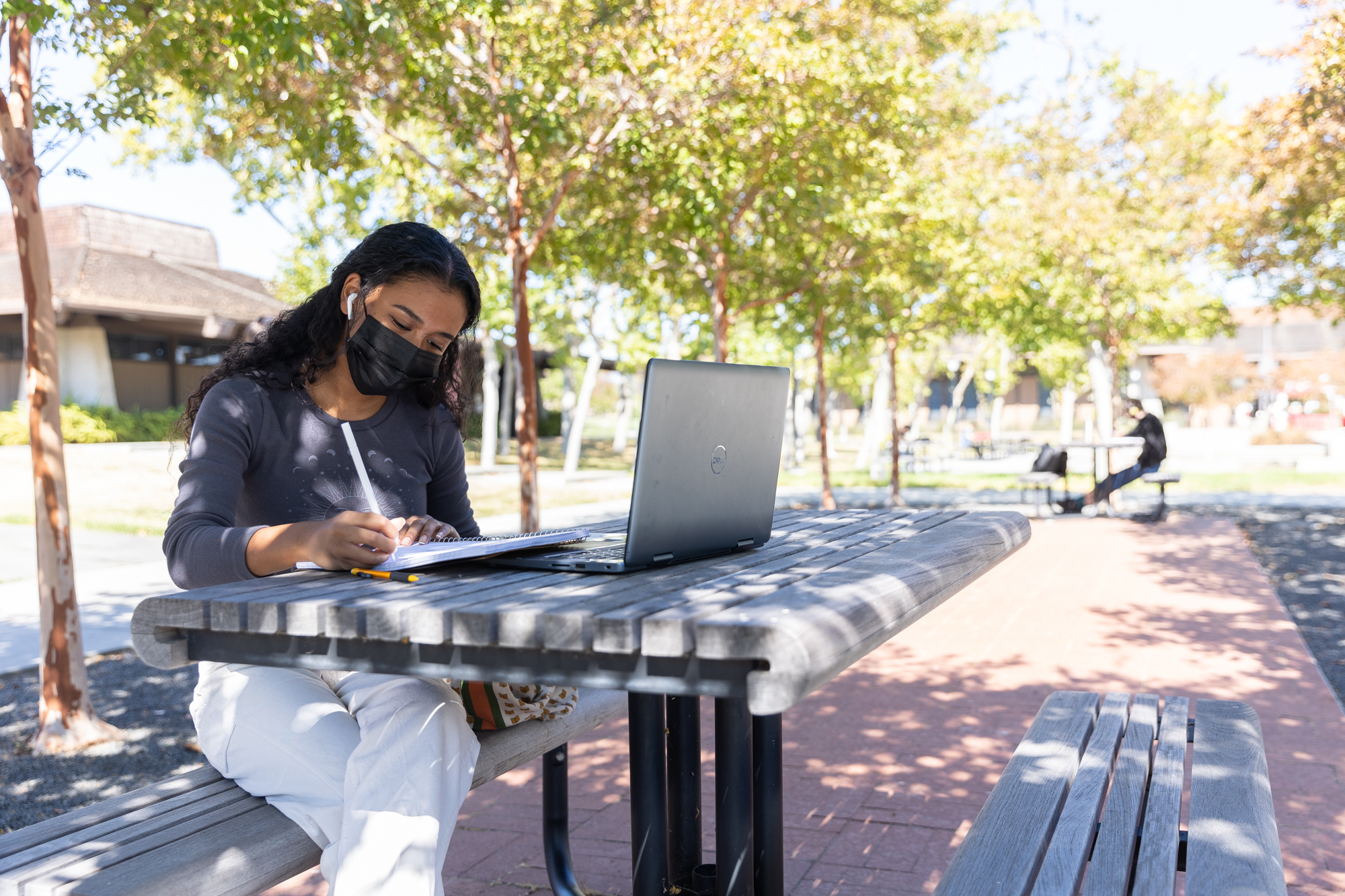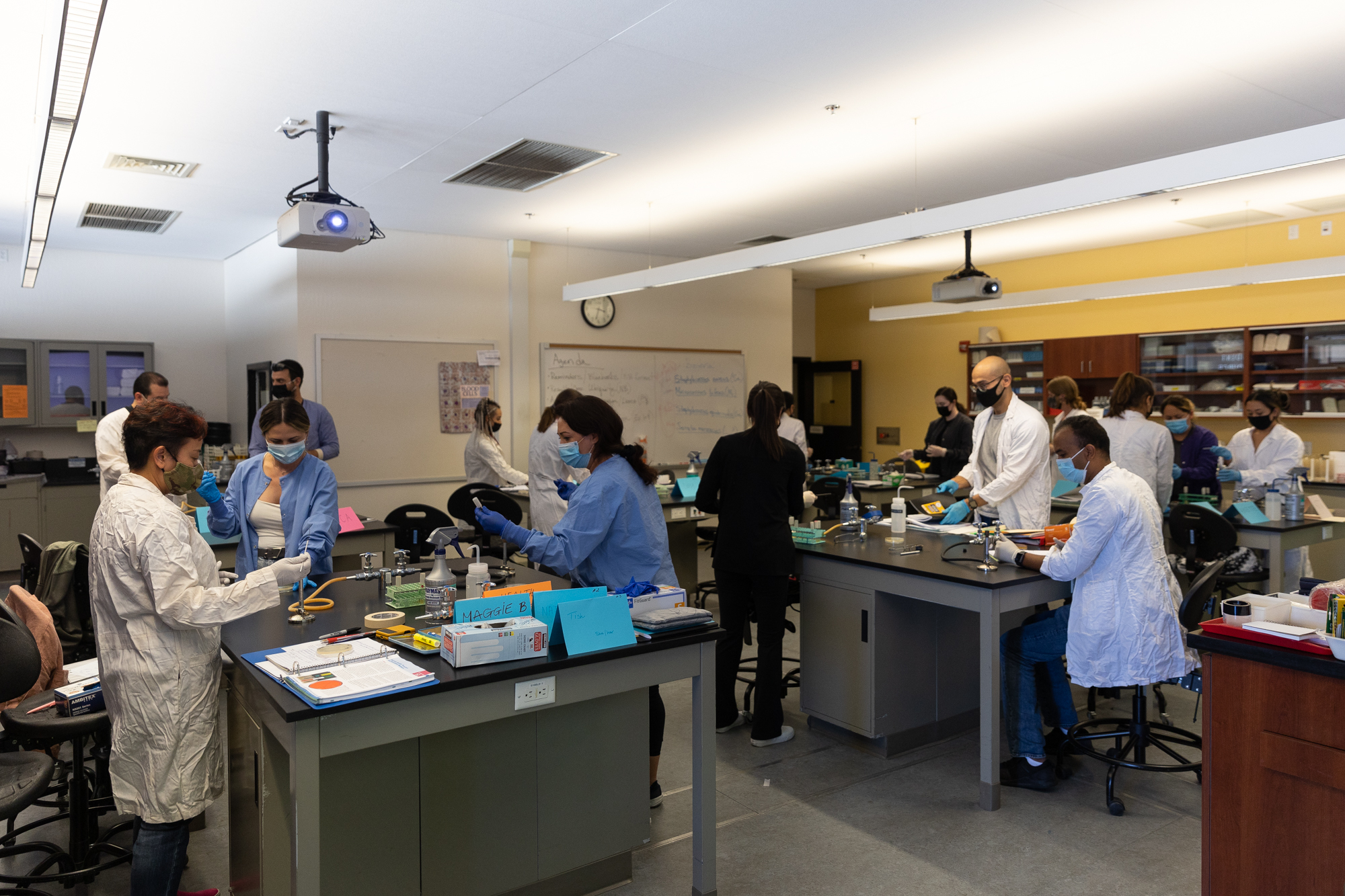Foothill resumed face-to-face instruction this week, with 3,180 out of roughly 11,500 students expected to come to campus sometime during the fall quarter.
Up until this point, the campus has been largely closed, except for allied health programs like respiratory therapy and pharmacy technology that have been running in person throughout the pandemic, Associate Vice President of Instruction Kurt Hueg said. Athletics resumed in May.
Students are now returning to campus for classes ranging from piano to engineering. This quarter, 18% of instruction is face to face, with another 9% utilizing both in-person and online components, Hueg said. The rest of the college's courses are virtual, some using live videoconferencing, while others are partially or fully asynchronous using prerecorded lectures.
Even before the pandemic, 51% of Foothill's enrollment was online, said Simon Pennington, the associate vice president of college and community relations, marketing and communications.
According to Hueg, the college has long invested in online instruction, and that accelerated during the pandemic. Now, the goal is to make both the physical and virtual spaces attractive options.
For Adam Hasmi, a Palo Alto High School graduate in his second year at Foothill, it's fulfilling to be on campus after a year away. Hasmi had his first in-person class on Tuesday.
"It's an amazing feeling to be back," he said. "I'm so excited to be here (and) see my fellow students. I'm saying hi to literally everyone."
Musaab Farooqui similarly said he's pleased that Foothill has reopened. As a 2020 Gunn High School graduate, Farooqui's senior year was cut short by the pandemic and he missed milestones like prom and graduation. Returning to a school campus feels fantastic, Farooqui said.
"The community atmosphere is back, finally," he said.
Although some students are excited to be back, opinions do vary. According to a survey of 915 students that the college conducted in July and August, over half of students said they were somewhat unlikely or not likely to access in-person services, even if registered for online-only classes.
According to Hueg, there are some students who have no interest in coming to campus and some who want only face-to-face instruction, but "the vast majority are looking for a mixture."
"Flexibility is the key," Pennington added.
For those who do return, Foothill has put a number of safety requirements in place, including mandatory masking both inside and outside, as well as a vaccine requirement. Students have until Oct. 1 to either provide proof of their vaccination or apply for a religious or medical exemption.
As of Sept. 22, roughly 2,500 students had already uploaded vaccination documentation and about 60 applied for an exemption, Pennington said. That includes students who are partially, but not yet fully, vaccinated. The rest have until the end of the month to finish the process or they will be dropped from their face-to-face classes.
"They know that Oct. 1 is the deadline," Pennington said. "I am hoping that we don't have to drop any students -- desperately hoping."
If students are dropped, the college has some remote classes starting later in the quarter into which they can switch.
Beyond masking and vaccinations, Foothill is also requiring students to fill out a daily online health questionnaire and is trying to put larger courses in rooms so that students have enough space to spread out.
"We're confident we can serve our students who are vaccinated and masked and do a very safe job in providing face-to-face instruction," Hueg said.
Engineering and physics instructor Sarah Parikh is teaching all of her classes in person this quarter and said that thus far she has seen full compliance with masking and other safety requirements. Students are doing a "wonderful job," Parikh said, adding that she hasn't heard any complaints.
"This is the new normal. This is what we're going to do and we're going to make it work," Parikh said. "It seems like the students are really excited to be back in the classroom."
She decided to teach on campus this fall because connecting with students and building a sense of community is more difficult online. Interactive components like labs can also be a challenge.
Foothill gave instructors the option of whether to return to campus. According to Hueg, administrators didn't feel a mandate was realistic given the uncertainty around the pandemic.
"We really relied on asking faculty who wanted to come back to take the lead," Hueg said. "It was really dependent upon faculty feeling comfortable doing it. We expect more faculty to get involved in face-to-face (teaching) again in the winter as we demonstrate that it's happening safely and effectively."
The Foothill-De Anza Community College District could require faculty to return in the future, Pennington said, but added that no decision has been made.
How many classes are currently operating on campus varies by department. Courses with more hands-on components, like STEM classes with labs, are the most likely to be back.
"That's the area that's as close to pre-pandemic as anywhere," Hueg said.
Some English and math classes have also returned, as well as courses like theater and ceramics.
Christy Belay is taking acting, theater scenery and design, and piano on campus this quarter. She is also taking online courses from De Anza College. Belay was originally a student at University of California at Davis but switched to community college during the pandemic because she didn't feel it was worth the money she was paying at Davis to just be learning online.
Being back on a college campus is strange, Belay said, but she's happy to be able to take courses in person again.
"It's a lot better than being at home, for sure," Belay said. "Actually getting to play on a piano was really nice."





Comments